#Digital Twin for Buildings
Explore tagged Tumblr posts
Text
#Building Twin Market#Digital Twin for Buildings#Smart Building Technology#BIM IoT Integration#Predictive Maintenance#Energy Management#Facility Management#Smart City Infrastructure#Cloud-based Building Twin
0 notes
Text

I might add shading later idk-
These characters are under 18
Sorry. I don’t want to be a reblog begger. BUT LIKES DO NOTHINGGGGGGGGGG
Background under the cut (Do not use)

#:3#my art#artists on tumblr#this took way too long#likes do nothing#bea#trix#Oc#world building#twins#storm twins#these used to be dnb ocs named dando and Dandix#concept art#digital art#art#orginal art#artwork#oc art#colorful#original character#character design#i love drawing#design#digital illustration#drawing#harpy oc#harpy#crow harpy#my ocs#original art
23 notes
·
View notes
Text
- 💠2024 Commission Gallery💠 - #01




#original art#digital aritst#digital illustration#illustration#digital art#art#artists on tumblr#commission#commission art#art commisions#fantasy#original character#character art#bunny#japanese shrine#garden#greenery#plants#oc art#Japanese building#bookstore#bookshelf#warm and comfy#comfy and cute#twins#dragon art
7 notes
·
View notes
Text
Welcome To Twin Infra - Digtal Twin
A Digital Twin Platform to improve timeliness and reduce cost overruns in your construction projects.
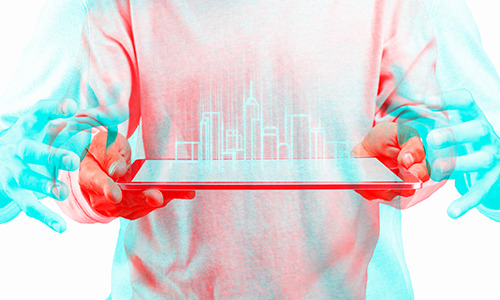
Twin Infra is is a complete IT solution for the Construction/Infrastructure industry based on the concept of “Digital Twin.” The Twin Infra module is an integrated cloud platform to manage data models, people, process, and assets throughout the lifecycle of a construction project. The Twin Infra module has predictive analytic features to anticipate and forecast in all the stages of Construction/Infra. It works on public, private, and virtual cloud infrastructure and uses Artificial Intelligence for operational insights and efficiency.
Contact us
#digital twin#twininfra#Common Data Environment#Design Engineering#Building Lifecycle Management#Design Data Management#Construction Project Management#Construction Project Management software#Digital Construction Platform#Construction Data Management
2 notes
·
View notes
Text
Digital Twins & Smart Buildings: The Future of Construction and Maintenance
In the modern world of construction and technology, two exciting terms are becoming very popular: Digital Twins and Smart Buildings. Let’s understand what they mean and how they are changing the way we design, build, and maintain buildings.

What is a Digital Twin? A Digital Twin is a virtual copy of a real-world building or system. It looks exactly like the real building and shows how it works in real time.
For example, imagine a hospital. A digital twin of that hospital will show everything inside it : rooms, machines, lighting, temperature, and even how people move inside. This digital model is connected to the real building through sensors and the internet, so when something changes in the real building, it updates in the digital one too.
What is a Smart Building? A Smart Building uses technology like sensors, Wi-Fi, and automation to control things such as:
Lights turning on/off automatically
Air conditioning adjusting to the weather
Elevators working more efficiently
Security cameras and alarm systems
All this helps save energy, reduce costs, and make life easier for the people using the building.
🔗 How are Digital Twins and Smart Buildings Connected? Digital Twins help smart buildings become even smarter.
Here’s how:
They collect data from the building in real time.
They show if something is not working, like a leaking pipe or a broken light.
They help plan maintenance before a problem becomes big.
They track energy use and suggest ways to save more.
It’s like having a 24/7 assistant that watches the building and helps manage it better.
🌍 Why are They Important?
Saves Time and Money - Problems can be found early and fixed faster.
Improves Safety - Emergency plans can be tested using the digital twin.
Supports Sustainability – Less energy waste means a healthier planet.
Better Design – Architects and engineers can test ideas in the virtual model first.
🚀 Who Uses Digital Twins Today?
Hospitals and airports
Schools and universities
Office buildings
Shopping malls
Factories and warehouses
Even city planners use digital twins to manage roads, water supply, and public services.
Digital Twins and Smart Buildings are transforming how we design and manage modern buildings. By using real-time data and smart technology, they help improve efficiency, safety, and sustainability. If you're interested in learning how to work with these technologies, the best online BIM course is offered by Anita BIM Solutions, a leading BIM institute in Kerala trusted by professionals and beginners alike.
0 notes
Text

Revolutionizing Building Lifecycle Assessment with Digital Twins
This insightful infographic explores how Digital Twin technology is revolutionizing the way buildings are planned, constructed, operated, and maintained. From design optimization to predictive maintenance, digital twins allow stakeholders in the AEC (Architecture, Engineering, and Construction) industry to manage the entire building lifecycle with real-time data and simulation.
Developed by Tejjy Inc. a leader in construction technology solutions in the USA, this infographic explains the top benefits of using digital twins, including cost savings, energy efficiency, and enhanced sustainability.
✅ Ideal for facility managers, contractors, engineers, and decision-makers looking to boost operational efficiency through technology.
What’s Inside the Infographic?
Visual overview of the building lifecycle stages
Key benefits such as real-time monitoring, predictive analytics, and lifecycle extension
Digital twin integration with BIM and IoT
ROI potential and use case scenarios
Why It Matters: Digital twins are no longer a future concept—they’re a present-day necessity for asset-rich industries. This infographic makes it easy to understand why investing in digital twin solutions delivers measurable outcomes.
0 notes
Text
Bridging Smart City Visions and Budgets with a Construction Cost Estimating Service
As cities worldwide shift toward smarter, more sustainable development, the idea of a "smart city" has moved from aspiration to implementation. These urban environments are designed to leverage data, technology, and intelligent infrastructure to improve livability and efficiency. However, turning smart city concepts into real, functional spaces requires more than innovation—it requires precise financial planning. A construction cost estimating service plays a critical role in aligning bold urban visions with practical, achievable budgets.
Understanding the Smart City Framework
Smart cities are built on interconnected systems that include digital infrastructure, energy-efficient buildings, intelligent transportation, and real-time public services. Examples include sensor-based lighting, integrated data platforms, automated waste management, and green infrastructure.
Each element has financial implications, from high-tech installations to long-term maintenance. Cost estimating services help translate these visionary features into actionable plans by forecasting expenses across the project lifecycle.
Challenges of Budgeting for Smart Cities
Smart city projects pose several budgeting challenges:
Technology evolution: Rapid innovation can make systems obsolete mid-project.
Cross-sector integration: Combining infrastructure, software, and construction raises cost complexity.
Data infrastructure: Building digital backbones adds another layer of cost beyond traditional construction.
Long-term sustainability goals: Energy systems and green design often involve higher initial investment.
These challenges make it essential to include experienced cost estimators early in the planning process to anticipate and manage financial complexity.
Benefits of a Construction Cost Estimating Service in Smart City Projects
Translating Vision into Numbers
Convert abstract smart city features into quantifiable line items.
Include software, hardware, and systems integration costs.
Map budgets to both current needs and future scalability.
Balancing Innovation with Cost
Assess value versus cost for smart features like IoT devices or automated systems.
Identify areas where innovation yields the highest return.
Prevent overinvestment in tech that doesn't improve efficiency or performance.
Integrating Infrastructure and Digital Layers
Estimate costs for physical and digital components together.
Include broadband, sensor networks, and control centers in construction budgets.
Forecast long-term operational costs such as data storage, upgrades, and monitoring.
Scenario Modeling for Smart Alternatives
Compare options like smart HVAC vs. conventional systems.
Evaluate solar energy integration versus grid reliance.
Analyze smart parking systems against traditional parking infrastructure.
Creating Adaptable Budgets
Smart cities evolve constantly. What’s innovative today may need updating tomorrow. A construction cost estimating service develops flexible budgets that adapt to:
Phased implementations
Future technology upgrades
Changing regulations or codes
Shifting funding sources
This adaptive budgeting ensures that smart city initiatives stay on course—even in a changing environment.
Collaborating Across Stakeholders
Smart city developments involve a mix of partners:
Government agencies
Private tech firms
Utility companies
Community stakeholders
Cost estimators provide a unified financial picture that all stakeholders can understand. This helps build consensus and trust, especially when projects are funded by public-private partnerships.
Risk Management in Smart Infrastructure
The technical complexity of smart cities increases financial risk. A single system failure could disrupt multiple services. Cost estimators manage these risks by:
Including redundancy costs for critical systems
Building in cybersecurity considerations
Accounting for maintenance, system support, and service contracts
This forward-thinking approach supports not just the build-out of smart infrastructure, but its sustainable performance.
Cost Planning for Sustainable Smart Design
Sustainability is a pillar of smart cities, encompassing:
Energy-efficient building design
Renewable energy integration
Low-impact materials and construction
Green transportation systems
Estimating services align sustainability goals with realistic budgets by:
Forecasting ROI for sustainable features
Incorporating incentives, rebates, and tax credits
Calculating lifecycle cost savings versus upfront spending
Linking Digital Twin Technology with Budget Planning
An emerging tool in smart cities is the "digital twin"—a real-time virtual model of the physical city. These systems help manage infrastructure more efficiently but come at a significant cost.
Cost estimators help:
Quantify the setup and operational cost of digital twins
Align them with existing construction and infrastructure budgets
Model upgrade paths and maintenance needs
This integration ensures the technology’s benefits are achieved without undermining financial feasibility.
Planning for Scalability and Future Growth
Smart cities are designed to grow. Estimators help projects prepare for future demands by:
Including scalable systems in original budgets
Creating allowances for future construction phases
Modeling per-capita infrastructure costs based on projected growth
This long-term outlook prevents underinvestment and supports urban resilience.
Conclusion
Smart cities represent the future of urban living—data-driven, energy-efficient, and responsive to the needs of their populations. But without detailed financial planning, these projects risk becoming too expensive, overly complex, or disconnected from reality.
A construction cost estimating service brings structure and clarity to the process. By accurately forecasting the cost of innovation, integration, and long-term performance, it enables urban planners, engineers, and policymakers to turn smart city concepts into budget-aligned action. In a world where cities must be both intelligent and sustainable, the foundation of success begins with smart estimating.
#smart city#cost estimating#budgeting#urban planning#digital infrastructure#IoT construction#energy efficiency#green building#public-private#lifecycle cost#sustainable urbanism#infrastructure cost#data networks#smart HVAC#digital twins#city design#modular systems#cost forecasting#stakeholder alignment#smart mobility#green infrastructure#urban innovation#adaptive budgets#risk management#maintenance cost#cost modeling#urban resilience#construction pricing#funding strategies#scalable systems
0 notes
Text

UTwin offre un software per la gestione degli edifici tramite il Building Information Modeling (BIM) ai proprietari e ai gestori di immobili, consentendo di prendere decisioni basate sui dati. Supportiamomanutentori, operatori, gestori di immobili e occupanti degli edifici per migliorare la collaborazione durante le fasi di gestione, e la performance durante il ciclo di vita utile dell'immobile
0 notes
Text
Uso da Inteligência Artificial na arquitetura e engenharia [GA]
A capacidade transformadora da Inteligência Artificial (IA) no campo da Arquitetura, Engenharia, Construção e Operação (AECO) decorre de intensas evoluções recentes em dois vetores: a evolução de hardware e o desenvolvimento de novas arquiteturas e capacidades de IA. A Nvidia, por exemplo, acaba de lançar o Blackwell, uma nova Unidade de Processamento Gráfico (GPU) que quintuplica o desempenho na…

View On WordPress
#AEC#AECO#arquiteto#Arquitetura#arquitetura e urbanismo#article#artigo#aU#BIM#BIM e mercado de projetos#blackwell#blog do Trevisan#Brasil#Building Information Modeling#Carles Farre#cenário#ChatGPT#cidades#construção civil#decisão#decisão baseada em dados#decisões#decisões baseadas em dados#digital twin#digital twins#Engenharia#execução autônoma#ferramentas#GA#gêmeo digital
1 note
·
View note
Text
- 💠2023 Commission Gallery💠 - #05


#original art#digital aritst#digital illustration#illustration#digital art#art#artists on tumblr#commission#commission art#art commisions#fantasy#original character#character art#bunny#japanese shrine#garden#greenery#plants#oc art#Japanese building#bookstore#bookshelf#warm and comfy#comfy and cute#twins#dragon art
7 notes
·
View notes
Text
United States green technology and sustainability market size reached USD 6.5 Billion in 2024. Looking forward, IMARC Group expects the market to reach USD 34.9 Billion by 2033, exhibiting a growth rate (CAGR) of 19.7% during 2025-2033.
#United States Green Technology and Sustainability Market Report by Component (Solution#Services)#Technology (Internet-of-Things#Cloud Computing#Artificial Intelligence and Analytics#Digital Twin#Cybersecurity#Blockchain)#Application (Green Building#Carbon Footprint Management#Weather Monitoring and Forecasting#Air and Water Pollution Monitoring#Forest Monitoring#Crop Monitoring#Soil Condition and Moisture Monitoring#Water Purification#and Others)#and Region 2025-2033#United States Green Technology and Sustainability Market
0 notes
Text

Discover How Digital Twin Solutions are Shaping the Future of Smart Buildings
Experience the next generation of smart buildings with Digital Twin Solutions—optimizing energy, predicting maintenance, and comfort with real-time insights.
0 notes
Text
🚀 Unlock the Future of Building! Discover how Digital Twins are revolutionizing construction by enhancing efficiency, reducing costs, and transforming project management. 🏗️✨ #DigitalTwins #ConstructionInnovation #SmartBuilding #TechRevolution #FutureOfConstruction #EfficiencyBoost #RethinkConstruction
#🚀 Unlock the Future of Building! Discover how Digital Twins are revolutionizing construction by enhancing efficiency#reducing costs#and transforming project management. 🏗️✨#DigitalTwins#ConstructionInnovation#SmartBuilding#TechRevolution#FutureOfConstruction#EfficiencyBoost#RethinkConstruction
0 notes
Text
📡 5 Things to Know About 3D Laser Scanning in AEC 🏗️
Thinking about using 3D Laser Scanning for your next construction or renovation project? Here are 5 must-know facts that could save you time, money, and mistakes:
🔹 1. It’s All About Accuracy Laser scanning captures millions of data points to create precise point clouds with millimeter-level accuracy—ideal for as-built documentation.
🔹 2. Scan to BIM is the New Standard The point cloud data can be imported into software like Revit to create intelligent BIM models that reflect real-world conditions.
🔹 3. Time-Saver for Renovations & Retrofits Forget the tape measure—laser scanning speeds up surveys and helps avoid costly surprises during design and construction.
🔹 4. Perfect for Clash Detection Scan existing conditions to spot clashes between new and existing MEP, structural, and architectural elements before construction begins.
🔹 5. Great for Infrastructure & Civil Projects From bridges to railways, laser scanning captures complex environments quickly and integrates seamlessly with Civil 3D and GIS tools.


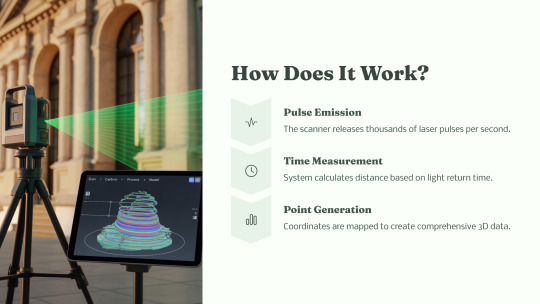
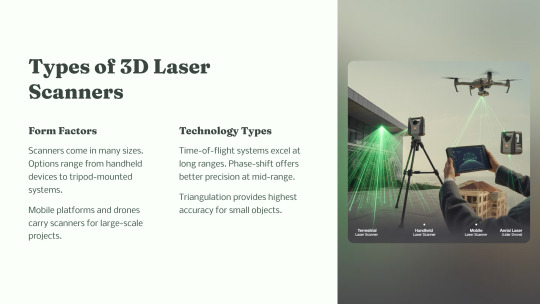



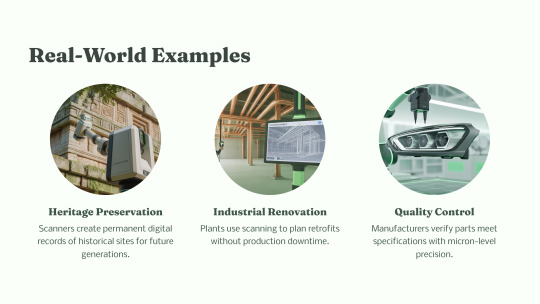
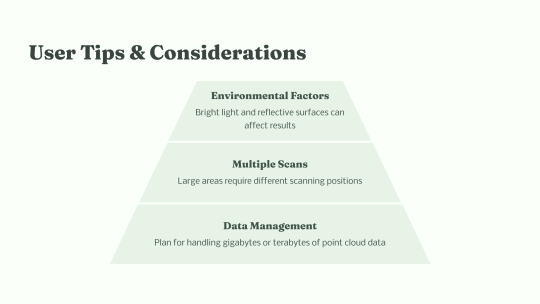

#building design#architecture#3d laser scanning#3d scanning#laser scanning technology#building information modeling#digital twin#architectural design
0 notes
Text

UTwin offre un software per la gestione degli edifici tramite il Building Information Modeling (BIM) ai proprietari e ai gestori di immobili, consentendo di prendere decisioni basate sui dati. Supportiamomanutentori, operatori, gestori di immobili e occupanti degli edifici per migliorare la collaborazione durante le fasi di gestione, e la performance durante il ciclo di vita utile dell'immobile
0 notes
Text
Transform Your Infrastructure with Smart Building Digital Twin Solutions
Elevate your infrastructure with Pratiti Technologies' smart building digital twin solutions. Our cutting-edge technology provides real-time monitoring and analytics, enhancing building efficiency, safety, and sustainability. Discover how digital twins can revolutionize your building management strategy.
0 notes